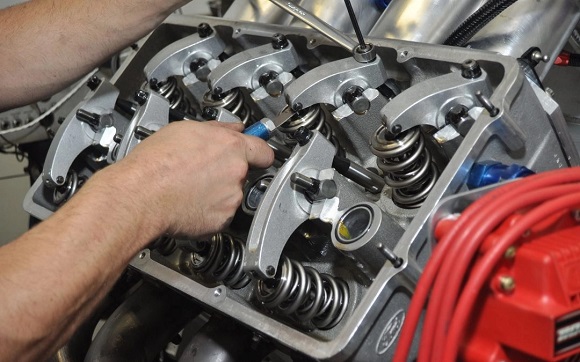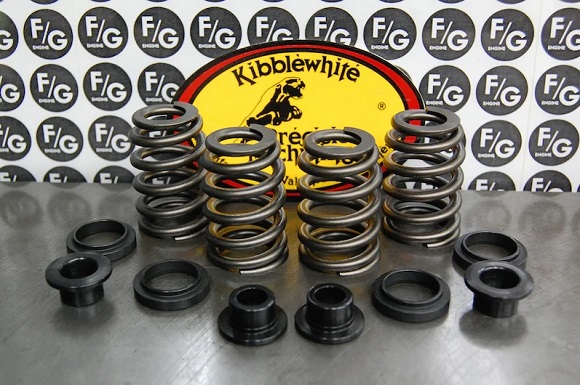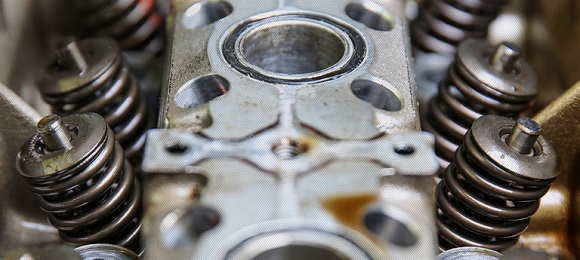The combustion engine is one of the biggest advancements in the past few centuries. Engines are made up of many different parts, all of which play an important role in their workings. One of these parts is valve springs. These parts play a key role in the breathing of the engine. The valves are mechanically opened by the camshaft, through tappets or valve lifters, and closed by the springs. These parts are underrated, and only true gearheads know the importance they can have on the performance of your engine.
Functions of a Valve Spring

A valve spring performs the following functions:
- Lifting the weight of the valves
- Overcoming the friction on the valve shaft when it closes
- Creating enough friction so that the valve train and valve follow the camshaft profile properly
- Providing greater force than the inertial force of the accelerated mass from the valve
- Keeping valve-spring forces low enough to prevent excessive friction on the cam, thus preventing performance losses
The forces required to keep the valve closed are referred to as preload forces. The forces required to maintain proper camshaft tracking at high revs are referred to as spring forces. In order to understand the importance of the springs better, you need to understand the importance of the valve itself.
Functions of an Engine Valve
The valve is divided into an intake valve and an exhaust valve. It looks similar to a horn. The intake valve is responsible for the air that goes into the intake manifold and the fuel mixing to get to the control of the cylinder, whereas the exhaust valve is responsible for the control of the exhaust gases out of the cylinder after the combustion process.
Older engines had only one intake and one exhaust valve per cylinder, making for simpler and more affordable designs. And while the low-speed response was good, the high-speed efficiency wasn’t. In order to improve the intake and exhaust efficiency and the overall performance of the vehicle, manufacturers made most engines today with multi-valve designs, the most common of which are 4 valves per cylinder, to 4-cylinder engines. That all adds up to 16 valves for a 4-cylinder engine.
Valve Spring Types

These springs are available in a few different styles, each designed to deal with the aforementioned functions in a slightly different manner.
Single Springs
These are the most commonly used valve springs and are available in 3 basic types – standard springs, beehive springs and conical springs.
- Standard springs feature a single spring with a flat ribbon damper on the inside. They work well in most stock engines, but produce more heat, friction and spring wear. The valve lift is limited and valve float can happen earlier than intended.
- Beehive springs coil tighter at the top and fit in standard spring seats. As a result, you get more lift before going into coil bind. The combined weight of the retainer and spring is lighter, allowing for better valve float control when compared to standard springs.
- Conical springs are tapered throughout the spring. Just like beehive springs, they allow for more lift before going into coil bind and allow for better valve float control compared to standard springs.
Dual Springs
These springs are a great option for performance engines that feature a heavy valvetrain. The two springs rub against one another and act as a damper. The second spring also acts as a safety measure. Broken springs are found before they drop a valve into the engine.
Triple Springs
These springs are meant for racing cars that require high spring pressure. That being said, you can generally find them on big block engines. Before you install them, you’ll need to machine the cylinder heads in order to avoid interference with the valve stem seals.
Which Ones to Choose?
It depends on the load the springs are subjected to. If the springs are subjected to high loads, you’ll want springs manufactured from high-tensile-strength alloys of high purity. Different manufacturers use different materials, designs and production processes. Springs are available in different hardnesses, and they can be further fine-tuned during the production process to fit specific applications.

When to Replace Valve Springs?
If the valve spring has cracks, uneven ends, inclined surface or inverted use, it will break, or they can increase the wear of the duct and valve stem, forcing the valve to close poorly. If the springs don’t provide sufficient pressure the valve will close poorly, which can lead to working surface ablation. The pressure of the valve spring shouldn’t be too high, otherwise, the valve tappet spheral surface or camshaft tip will increase the wear, resulting in excessive valve foot clearance and weird noises.
That being said, if you notice any abnormalities in your engine’s performance, or hear strange noises, don’t hesitate to check it thoroughly, including the state of the valve springs. If a valve spring is damaged, make sure you get a proper replacement. Replacing a valve spring isn’t difficult, as long as you are handy with tools and own a valve spring compressor to do the job.
